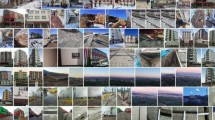Abstract
The incorporation of a set ofcomputer-based tools, such as Geographical InformationSystems and physical models, to the field of riskassessment, introduces a new perspective in thevolcanic risk maps production, increasing the analysisand modelling capabilities available through theapplication of conventional methodologies. Amethodology adapted to the requirements andcharacteristics of the new operating environment hasbeen applied at Tenerife island (Canary Islands,Spain) to carry out a study devoted to analyse thesuitability of these tools for near real-timemanagement of volcanic crises. With this in mind, aseries of potential eruption scenarios have beenselected to identify and characterise which elementsat risk would prove most vulnerable against a specificvolcanic phenomenon, depending on the socio-economiccharacteristics of the area affected and the resultingdistribution of the volcanic products. This kind ofinformation is fundamental to update, adapt or produceeffective risk management and emergency plans orprotocols, where the measures to mitigate or fightagainst a specific volcanic disaster have to be taken,incorporating the existing knowledge of the phenomenonbehaviour and taking into account their potentialeffects on the area of interest.
Similar content being viewed by others
References
Barberi, F., Carapezza, M. L., Valenza, M., and Villari, L.: 1993, The control of lava flows during the 1991–1992 eruption of Mt. Etna, J. Volcanol. Geotherm. Res. 56, 1–34.
Diggle, P. J. and Milne, R. K.: 1983, Bivariate Cox processes: Some models for bivariate spatial point patterns, J. R. Stat. Soc. B 45, 11–21.
Felpeto, A., García, A., and Ortiz, R.:1996, Mapas de riesgo. Modelización, In: R. Ortiz (ed.), Riesgo Volcánico, Serie Casa de los Volcanes No. 5, Servicio de Publicaciones del Cabildo de Lanzarote, pp. 67–98.
Gómez-Fernández, F.: 1997, Desarrollo de una Metodología para el Análisis del Riesgo Volcánico en el marco de un Sistema de Información Geográfica, PhD Thesis, Universidad Complutense de Madrid.
Gómez-Fernández, F.: In press, Application of a GIS algorithm to delimit the areas protected against basic lava flow invasion on Tenerife island, J. Volcanol. Geotherm. Res.
Gómez-Fernández, F. and Macedonio, G.: 1998, Integration of physical simulation models in the frame of a GIS for the development of a volcanic risk assessment information system, In: C. A.
Brebbia, J. L. Rubio, and J. L. Uso (eds), Risk Analysis, Computational Mechanics Publications, pp. 265–274.
Wadge, G., Young, P. A. V., and McKendrick, I. J.: 1994, Mapping lava flow hazards using computer simulation. J. Geophys. Res. 99(B1), 484–504.
Author information
Authors and Affiliations
Rights and permissions
About this article
Cite this article
Gómez-Fernández, F. Contribution of Geographical Information Systems to the Management of Volcanic Crises. Natural Hazards 21, 347–360 (2000). https://doi.org/10.1023/A:1008150816028
Issue Date:
DOI: https://doi.org/10.1023/A:1008150816028




